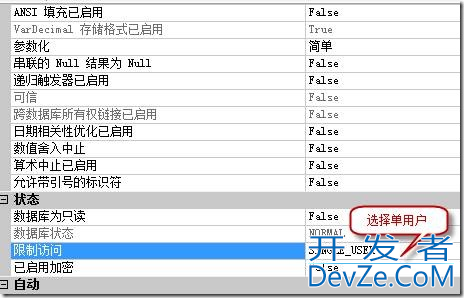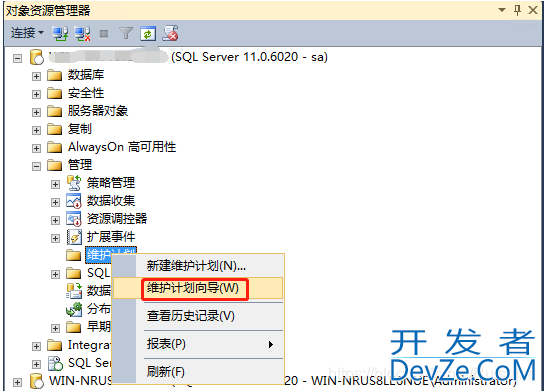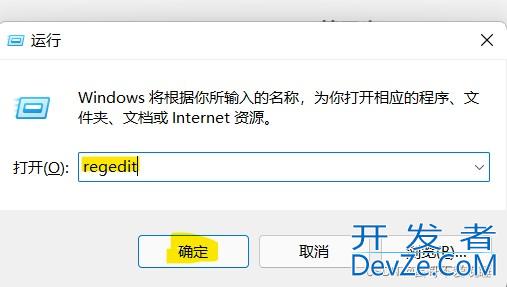Oracle中游标Cursor的用法详解
目录
- 一、使用游标
- 1.定义游标
- 2.打开游标
- 3.提取数据
- 4.关闭游标
- 5.游标属性
- 6.参数游标
- 二、for循环遍历,实现遍历游标最高效方式。
- 三、使用游标更新或删除数据
- 四、通过bulk collect减少loop处理的开销
- 五、使用游标变量
- 1.游标变量使用步骤
- 1.1定义ref cursor类型和游标变量
- 1.2打开游标
- 1.3提取游标数据
- 1.4关闭游标变量
- 2.游标变量使用示例
一、使用游标
对于DML语句和单行select into ,oracle自动分配隐形游标。处理select返回多行语句,可以使用显式游标。
使用显示游标处理多行数据,也可使用SELECT..BULK COLLECT INTO 语句处理多行数据.
1.定义游标
cursor cursor_name is select_statement;
2.打开游标
执行对应的SELECT语句并将SELECT语句的结果暂时存放到结果集中.
open cursor_name;
3.提取数据
打开游标后,SELECT语句的结果被临时存放到游标结果集中,使用FETCH语句只能提取一行数据
通过使用FETCH..BULK COLLECT INTO语句每次可以提取多行数据
fetch cursor_name into variable1,varibale2,...; fetch cursor_name bulk collect into collect1,collect2,...[limit rows];
(1)游标中使用fetch..into语句:只能处理一行数据,除非用循环语句
declare
v_bookname varchar2(100);
cursor c_book(i_id number) is select bookname from book where id = i_id;
begin
Open c_book(10);--打开游标
Loop
Fetch c_book into v_bookname; --提取游标
exit when c_book%notfound;
update book set price = '33' where bookname = v_bookname;
End Loop;
Close c_book;--关闭游标
end;
或
declare
v_bookname varchar2(100);
cursor c_book(i_id number) is select bookname from book where id = i_id;
begin
Open c_book(10);
Fetch c_book into v_bookname;--预先Fetch一次
While c_book%found Loop
update book set price = '33' where bookname = v_bookname;
Fetch c_book into v_bookname;
End Loop;
Close c_book;
end;
(3)基于游标定义记录变量
declare
cursor emp_cursor is select ename,sal from emp;
emp_record emp_cursor%rowtype;
begin
open emp_cursor;
loop
fetch emp_cursor into emp_record;
exit when emp_cursor%notfound;
dbms_output.put_line('雇员名:'||emp_record.ename||',雇员工资:'||emp_record.sal);
end loop;
end;
4.关闭游标
close cursor_name;
5.游标属性
用于返回显示游标的执行信息,包括%isopen,%found,%notfound,%rowcount
- %isopen:确定游标是否打开
- %found:检查是否从结果集中提取到了数据
- %notfound:与%found行为相反。
- %rowcount:返回当前行为止已经提取到的实际行数
no_data_found和%notfound的用法是有区别的,小结如下1)S编程客栈ELECT. . . INTO 语句触发 no_data_found;
2)当一个显式光标(静态和动态)的 where 子句未找到时触发 %notfound;3)当UPDATE或DELETE语句的where 子句未找到时触发 sql%notfound;4)在光标的提取(Fetch)循环中要用 %notfound 或%found 来确定循环的退出条件,不要用no_data_found。6.参数游标
注意:定义参数游标时,游标参数只能指定数据类型,而不能指定长度。
declare
cursor emp_cursor(no number) is select ename from emp where deptno=no;
v_ename emp.ename%type;
begin
open emp_cursor(10);
loop
fetch emp_cursor into v_ename;
exit when emp_cursor%notfound;
dbms_output.put_line(v_ename);
end loop;
close emp_cursor;
end;
二、for循环遍历,实现遍历游标最高效方式。
使用FOR循环时,ORACLE会隐含的打开游标,提取游标数据并关闭游标。
每循环一次提取一次数据,在提取了所有数据后,自动退出循环并隐含的关闭游标。
1.使用游标FOR循环
--不需要声明v_bookname,Open和Close游标和fetch操作(不用打开游标和关闭游标,实现遍历游标最高效方式)
declare
cursor c_book(i_id number) is select bookname from book where id = i_id;
begin
for cur in c_book(10) loop --循环变量cur不需要声明
update book set price = '53' where bookname = cur.bookname;
end loop;
end;
2.在游标FOR循环中直接使用子查询
begin
www.devze.com for emp_record in (select ename,sal from emp) loop
dbms_output.put_line(emp_record.ename);
end loop;
end;
三开发者_mssql2008、使用游标更新或删除数据
要通过游标更新或删除数据,在定义游标时必须要带有FOR UPDATE子句
cursor cursor_name(parameter_name datetype) is select_statement for update [of column_reference] [nowait];
- for update子句:用于在游标结果集数据上家行共享锁,防止其他用户在相应行执行DML操作
- of子句:确定哪些表要加锁,没有OF子句,则在所引用的全部表上加锁
- nowait子句:用于指定不等待锁
- 必须在UPDATE后DELETE语句中引用WHERE CURRENT OF子句update table_name set column=.. where current of cursor_name;delete table_name where current of cursor_name;
declare
cursor emp_cursor is select ename,sal from emp for update;
v_ename emp.ename%type;
v_sal emp.sal%tyep;
begin
open emp_cursor;
loop
fetch emp_cursor into v_ename,v_oldsal;
exit when emp_cursor%notfound;
if v_oldsal<2000 then
update emp set sal=sal+100 where current of emp_cursor;--delete from emp where current of emp_cursor;
end if;
end loop;
close emp_cursor;
end;
四、通过bulk collect减少loop处理的开销
将查询结果一次性加载到集合中,而不是一条一条的加载。
(1)在显示游标中,使用FETCH..BALK COLLhttp://www.devze.comECT INTO语句提取所有数据
declare
cursor emp_cursor is select ename from emp where deptno=10;
type ename_table_type is table of varchar2(10);
ename_table ename_table_type;
begin
open emp_cursor;
fetch emp_cursor bulk collect into ename_table;
for i in 1..ename_table.count loop
dbms_output.put_line(ename_table(i));
end loop;
close emp_cursor;
end;
(2)游标中使用FETCH..BULK COLLECT INTO ..LIMIT语句提取部分数据
declare
type name_array_type is varray(5) of varchar2(10);
name_array name_array_type;
cursor emp_cursor http://www.devze.comis select ename from emp;
rows int:=5;
v_count int:=0;
begin
open emp_cursor;
loop
fetch emp_cursor bulk collect into name_array limit rows;
dbms_output.pur('雇员名');
for i in 1..(emp_currsor%rowcount-v_count) loop
dbms_output.put(name_array(i)||' ');
end loop;
dbms_output.new_line;
v_count:=emp_cursor%rowcount;
exit when emp_cursor%notfound;
end loop;
close emp_cursor;
end;
五、使用游标变量
PL/SQL的游标变量中存放着指向内存地址的指针.
1.游标变量使用步骤
包括定义游标变量,打开游标,提取游标数据,关闭游标等四个阶段
1.1定义ref cursor类型和游标变量
type ref_type_name is ref cursor [return return_type]; cursor_varibale ref_type_name;
当指定RETURN子句时,其数据类型必须是记录类型,不能在包内定义游标变量
1.2打开游标
open cursor_variable for select_statement;
1.3提取游标数据
fetch cursor_varibale into variable1,variable2,...; fetch cursor_varibale bulk collect into collect1,collect2,...[limit rows]
1.4关闭游标变量
close cursor_varibale;
2.游标变量使用示例
1、在定义FEF CURSOR类型时不指定RETURN子句
在打开游标时可以指定任何的SELECT语句
declare
type emp_cursor_type is ref cursor;
emp_cursor emp_cursor_type;
emp_record emp%rowtype;
begin
open emp_cursor for select * from emp where deptno=10;
loop
fetch emp_cursor into emp_record;
exit when emp_cursor%notfound;
dbms_output.put_line('第'||emp_curosr%rowcount||'个雇员: '||emp_record.ename);
end loop;
close emp_cursor;
end;
2、在定义REF CURSOR类型时指定RETURN子句
在打开游标时SELECT语句的返回结果必须与RETURN子句所指定的记录类型相匹配.
declare
type emp_record_type is record(name varchar2(10),salary number(6,2));
type emp_cursor_type is ref cursor return emp_record_type;
emp_cursor emp_cursor_type;
emp_record emp_record_type;
begin
open emp_cursor for select ename,sal from emp where deptno=20;
loop
fetch emp_cursor into emp_record;
exit wh编程客栈en emp_cursor%notfound;
dbms_output.put_line('第'||emp_curosr%rowcount||'个雇员: '||emp_record.ename);
end loop;
close emp_cursor;
end;
到此这篇关于Oracle中游标Cursor用法的文章就介绍到这了。希望对大家的学习有所帮助,也希望大家多多支持我们。








 加载中,请稍侯......
加载中,请稍侯......
精彩评论